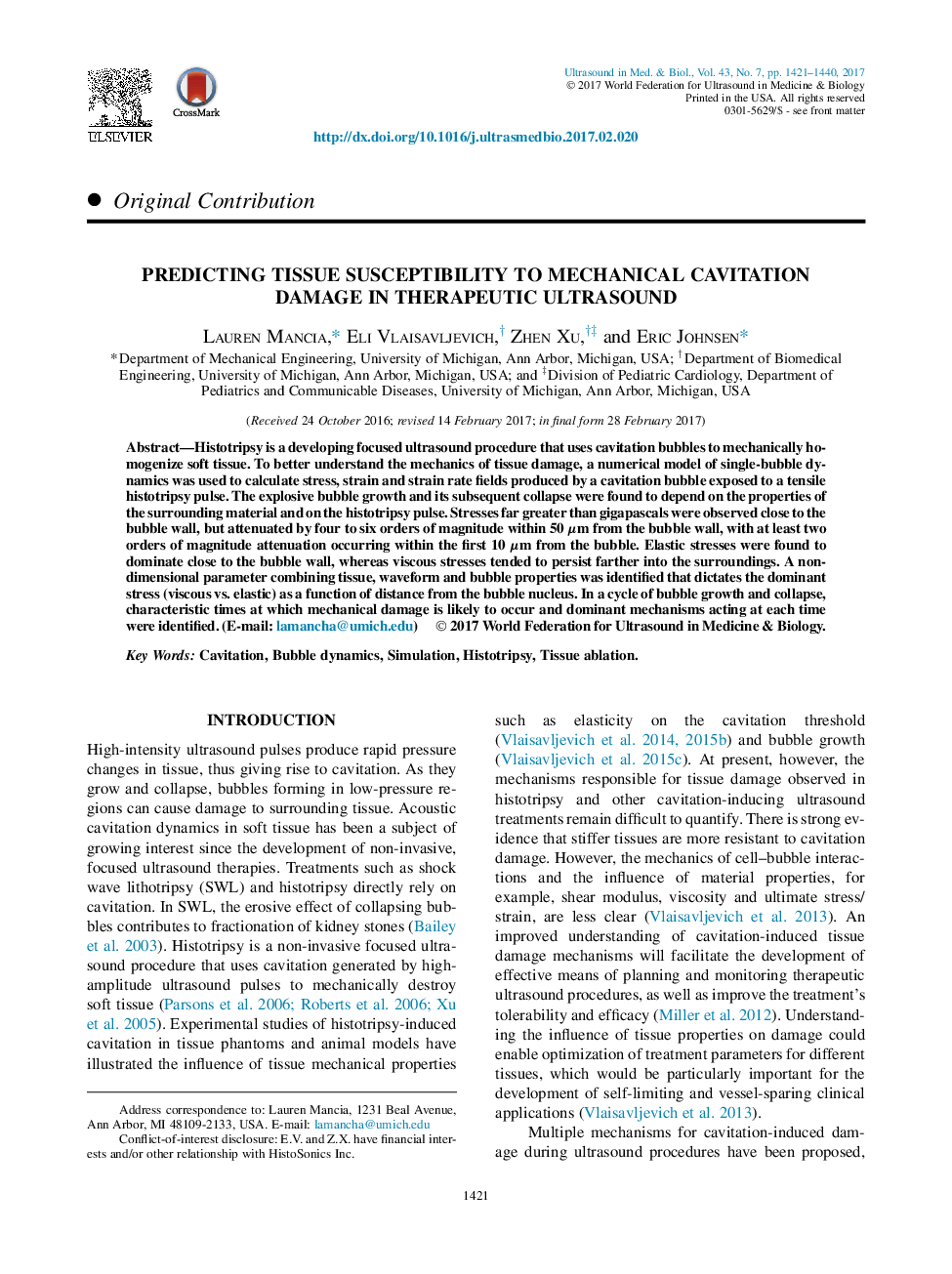| Article ID | Journal | Published Year | Pages | File Type |
|---|---|---|---|---|
| 5485648 | Ultrasound in Medicine & Biology | 2017 | 20 Pages |
Abstract
Histotripsy is a developing focused ultrasound procedure that uses cavitation bubbles to mechanically homogenize soft tissue. To better understand the mechanics of tissue damage, a numerical model of single-bubble dynamics was used to calculate stress, strain and strain rate fields produced by a cavitation bubble exposed to a tensile histotripsy pulse. The explosive bubble growth and its subsequent collapse were found to depend on the properties of the surrounding material and on the histotripsy pulse. Stresses far greater than gigapascals were observed close to the bubble wall, but attenuated by four to six orders of magnitude within 50 μm from the bubble wall, with at least two orders of magnitude attenuation occurring within the first 10 μm from the bubble. Elastic stresses were found to dominate close to the bubble wall, whereas viscous stresses tended to persist farther into the surroundings. A non-dimensional parameter combining tissue, waveform and bubble properties was identified that dictates the dominant stress (viscous vs. elastic) as a function of distance from the bubble nucleus. In a cycle of bubble growth and collapse, characteristic times at which mechanical damage is likely to occur and dominant mechanisms acting at each time were identified.
Related Topics
Physical Sciences and Engineering
Physics and Astronomy
Acoustics and Ultrasonics
Authors
Lauren Mancia, Eli Vlaisavljevich, Zhen Xu, Eric Johnsen,
